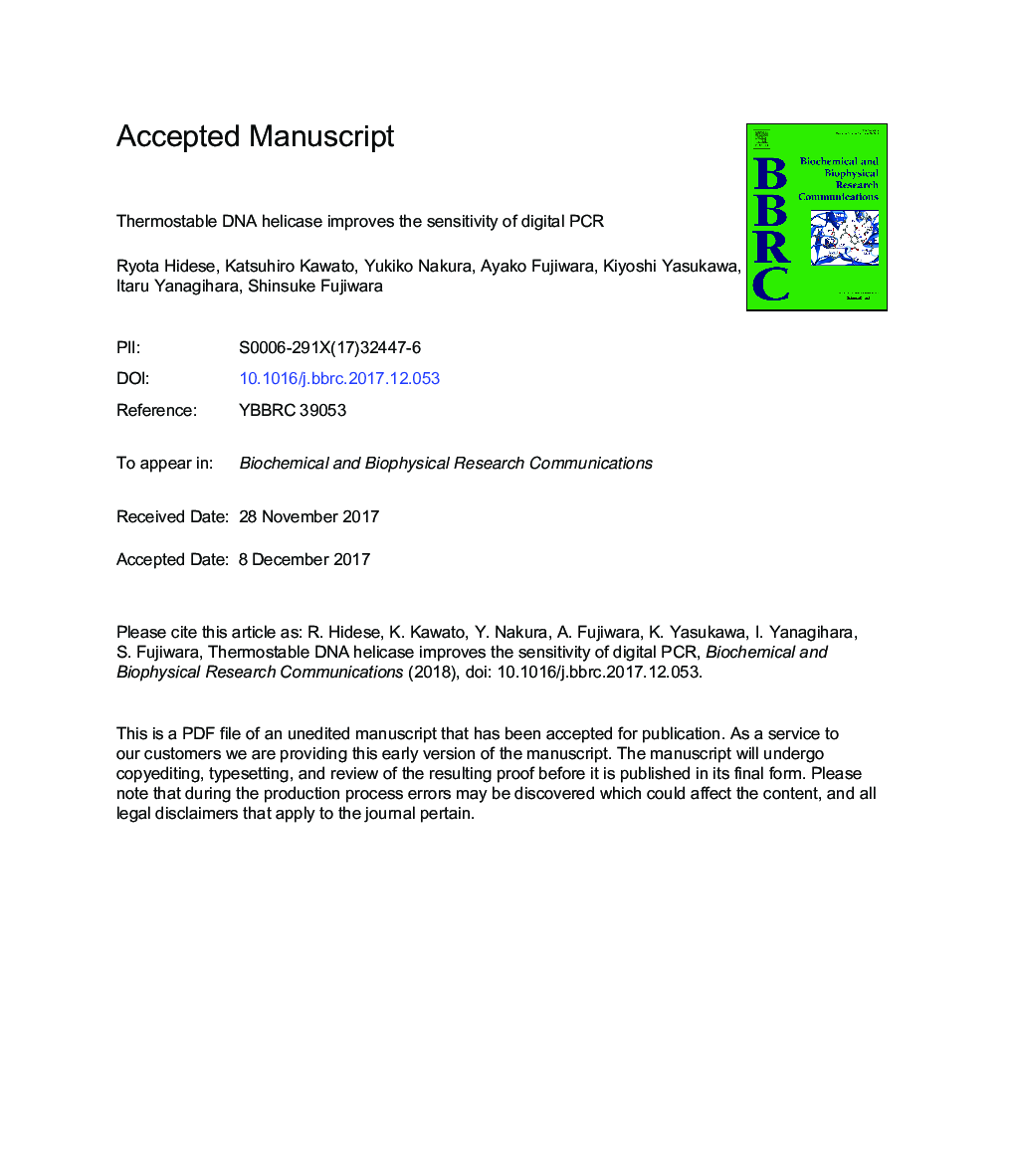| Article ID | Journal | Published Year | Pages | File Type |
|---|---|---|---|---|
| 8295077 | Biochemical and Biophysical Research Communications | 2018 | 19 Pages |
Abstract
DNA/RNA helicases, which catalyze the unwinding of duplex nucleic acids using the energy of ATP hydrolysis, contribute to various biological functions involving DNA or RNA. Euryarchaeota-specific helicase Tk-EshA (superfamily 2) from the hyperthermophilic archaeon Thermococcus kodakarensis has been used to decrease generation of mis-amplified products (noise DNAs) during PCR. In this study, we focused on another type (superfamily 1B) of helicase, Tk-Upf1 (TK0178) from T. kodakarensis, and compared its effectiveness in PCR and digital PCR with that of Tk-EshA. For this purpose, we obtained Tk-Upf1 as a recombinant protein and assessed its enzymatic characteristics. Among various double-stranded DNA (dsDNA) substrates (forked, 5Ⲡoverhung, 3Ⲡoverhung, and blunt-ended duplex), Tk-Upf1 had the highest unwinding activity toward 5Ⲡoverhung DNAs. Noise DNAs were also eliminated in the presence of Tk-Upf1 at concentrations 10-fold lower than those required to yield a comparable reduction with Tk-EshA. When a 5Ⲡor 3Ⲡoverhung mis-annealed primer was included as a competitive primer along with specific primers, noise DNAs derived from the mis-annealed primer were eliminated in the presence of Tk-Upf1. In digital PCR, addition of Tk-EshA or Tk-Upf1 increased fluorescent intensities and improved separation between common and risk allele clusters, indicating that both helicases functioned as signal enhancers. In comparison with Tk-EshA, a smaller amount of Tk-Upf1 was required to improve the performance of digital PCR.
Keywords
Related Topics
Life Sciences
Biochemistry, Genetics and Molecular Biology
Biochemistry
Authors
Ryota Hidese, Katsuhiro Kawato, Yukiko Nakura, Ayako Fujiwara, Kiyoshi Yasukawa, Itaru Yanagihara, Shinsuke Fujiwara,
